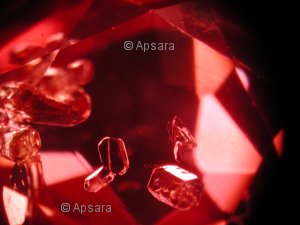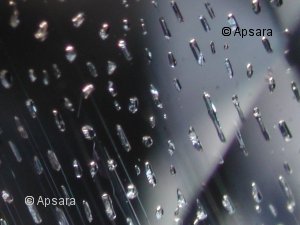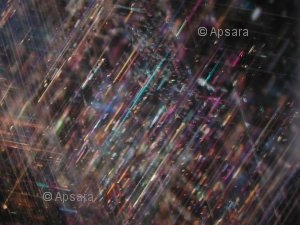Gem Inclusions
Virtually all coloured gems contain inclusions in a variety of forms. Some people see inclusions as flaws but in reality, inclusions are impurities or growth marks contained within the crystal structure. Most inclusions develop along with the formation of the host crystal. They can include crystal inclusions, liquid inclusions (feathers & fingerprints), growth lines, needles and others. There are also inclusions that can develop after the formation of the crystal, for example fractures and fissures. Some inclusions are more common than others, for example colour banding in blue sapphires.
Synthetic (lab-grown) gems also contain inclusions which are generally impurities left over from the manufacturing process. Flame-fusion synthetic rubies & sapphires contain gas bubbles and curved growth lines, again left over from the manufacturing process.
For gemmologists, inclusions are useful for a variety of reasons. They can provide evidence to help separate natural and synthetic gems. With natural gems they can help to provide evidence of the gem’s geographical origin and have also become a very important tool to gemmologists to separate treated and untreated gems. Heating gems will alter inclusions which will help with identifying gems which have gone through this process.
On our website we photograph gems on a white background. This can sometimes make inclusions appear more pronounced than to the naked eye. For example, colour zoning or banding may be visible in a photograph but not seen with the naked eye. We also provide side and back profile pictures of our gems, which can also make some inclusions appear more pronounced.






